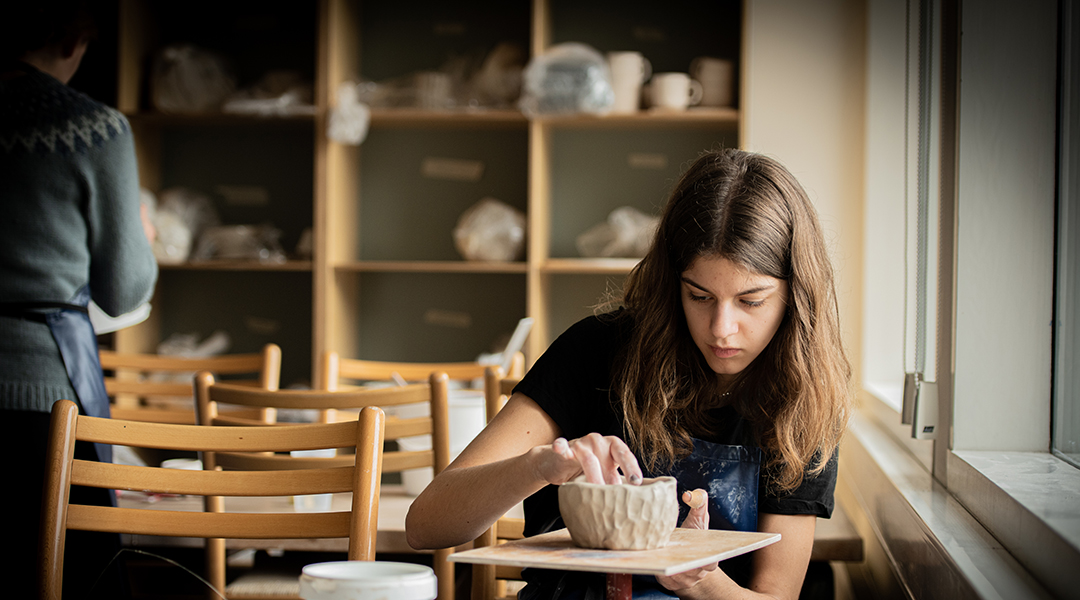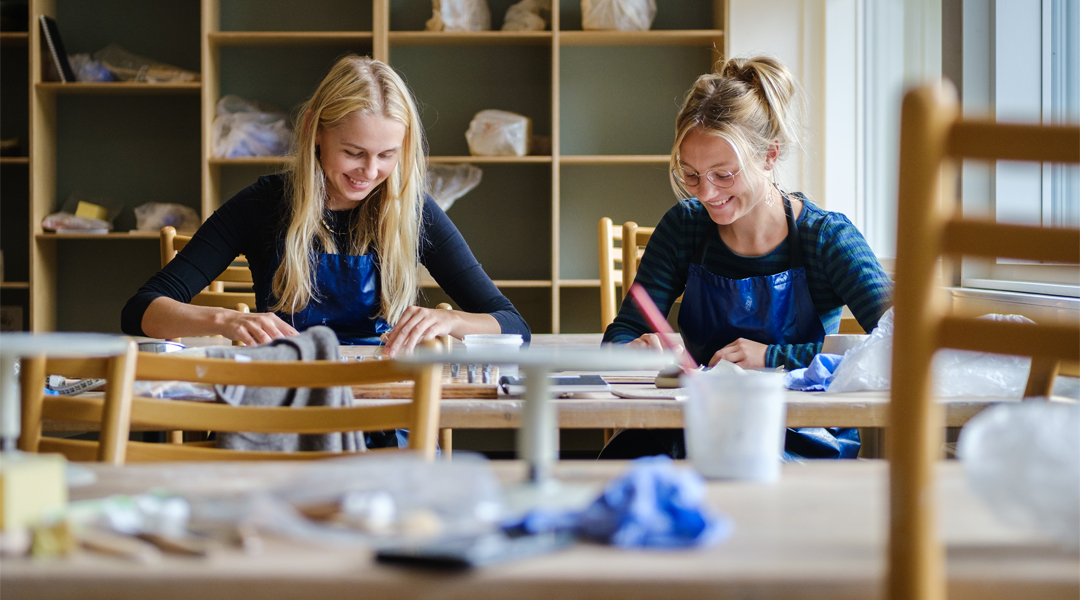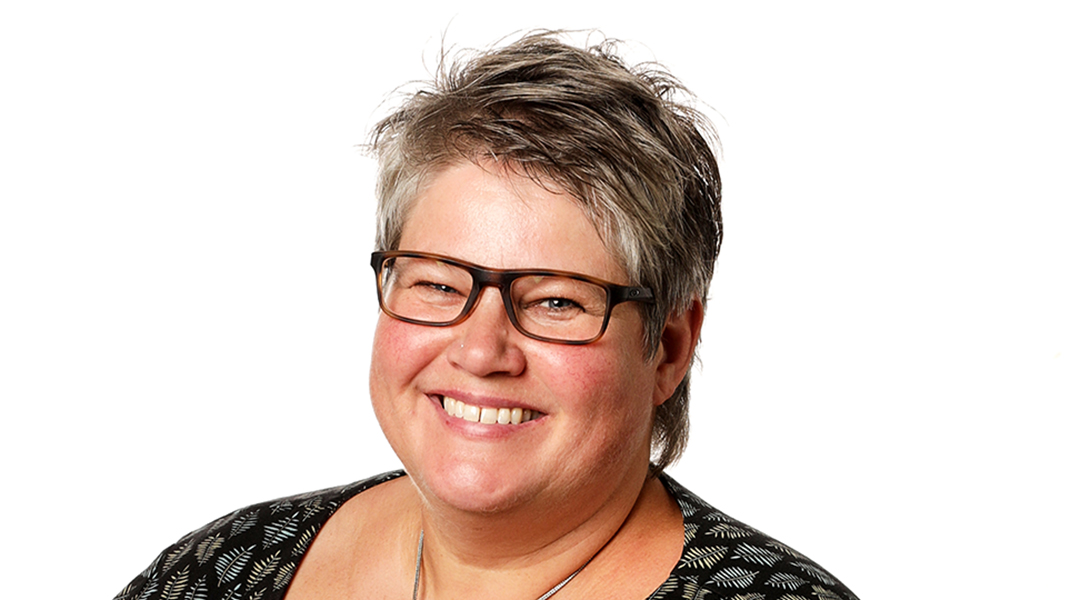Ceramics
To work with ceramics is to unite knowledge, technique and ideas and translate it into form and expression. In this main subject we will explore the possibilities of creating with clay, learn a wide range of techniques and experiment with the aesthetic universe of the material. We focus on the techniques that strengthen your creative abilities, and as you master the craft, you will be able to infuse your ideas with your own unique, artistic expression.
What we do in class
The creative process
A creative process is best based on a mode of inspiration. We will draw inspiration from; the cultural history of ceramics, works of art, the past and the present, methodologies, existential and relevant themes and, among other things, visit Museum CLAY and Museum Jorn as well as local designers and studios.
We will work with both applied art as well as experiment with sculptures and more abstract modes of expression. In the design process, you decide on form, colours, aesthetics and function, so that your idea emerges as your personal expression in the clay.

Techniques
You will learn how to shape the clay through a number of classical and new techniques.
- Plate technique is constructing shapes out of slabs of clay.
- Wheel throwing describes the potter’s profession. You will learn centering, throwing, winding and shaping clay on electric pottery wheels.
- Kurinuki, a Japanese technique, where your design emerges through carving resulting in unique surface structures and angular shapes.
- The principle behind coiling ceramics is that you build the walls of your design by adding clay coils to form your desired shape.
- Molding refers to producing identical objects from a base plaster mold
- Modelling is ideal for traditional sculptural work as well as experimental and abstract forms. It entails rolling, squeezing, pulling, smoothing and joining pieces of clay into desired shapes.
- Pinch is a technique where the hands as the primary tool squeeze the clay into the desired shape.
Processing and decorating
In the final steps of processing our creations we will work with different modes of setting and stoneware glaze before our designs are bisque fired in an electric kiln or using the Japanese firing technique Raku entailing fire and smoke under the open sky.

Teaching style
Classes consist of practical work in the ceramics workshop, shared inspirational presentations, technical introductions and guidance. You will try your hand at both individual and group projects. Throughout the process we will reflect on aesthetics and design, tradition and innovation. Join the main subject of Ceramics and enjoy the buzz of a creative workshop atmosphere where our differences in skills and experience are used for mutual inspiration.
No prerequisites needed in ceramics
Ceramics is for everyone and the teaching is based on the fact that you may join as a beginner as well as a more experienced potter.

The ceramics facilities at Silkeborg Højskole
- Two new well-equipped ceramics workshops from 2020.
- 16 electric pottery wheels
- Access to tools, e.g. sheet rollers, extruders, etc.
- Glaze department with a large selection of glazes.
- Several ovens and raku ovens
- The workshops are open during your free time.
Main subjects are primarily taught in Danish. However, relevant English translation will be provided for international students.
International students apply here

Maren Gadegaard
Teacher